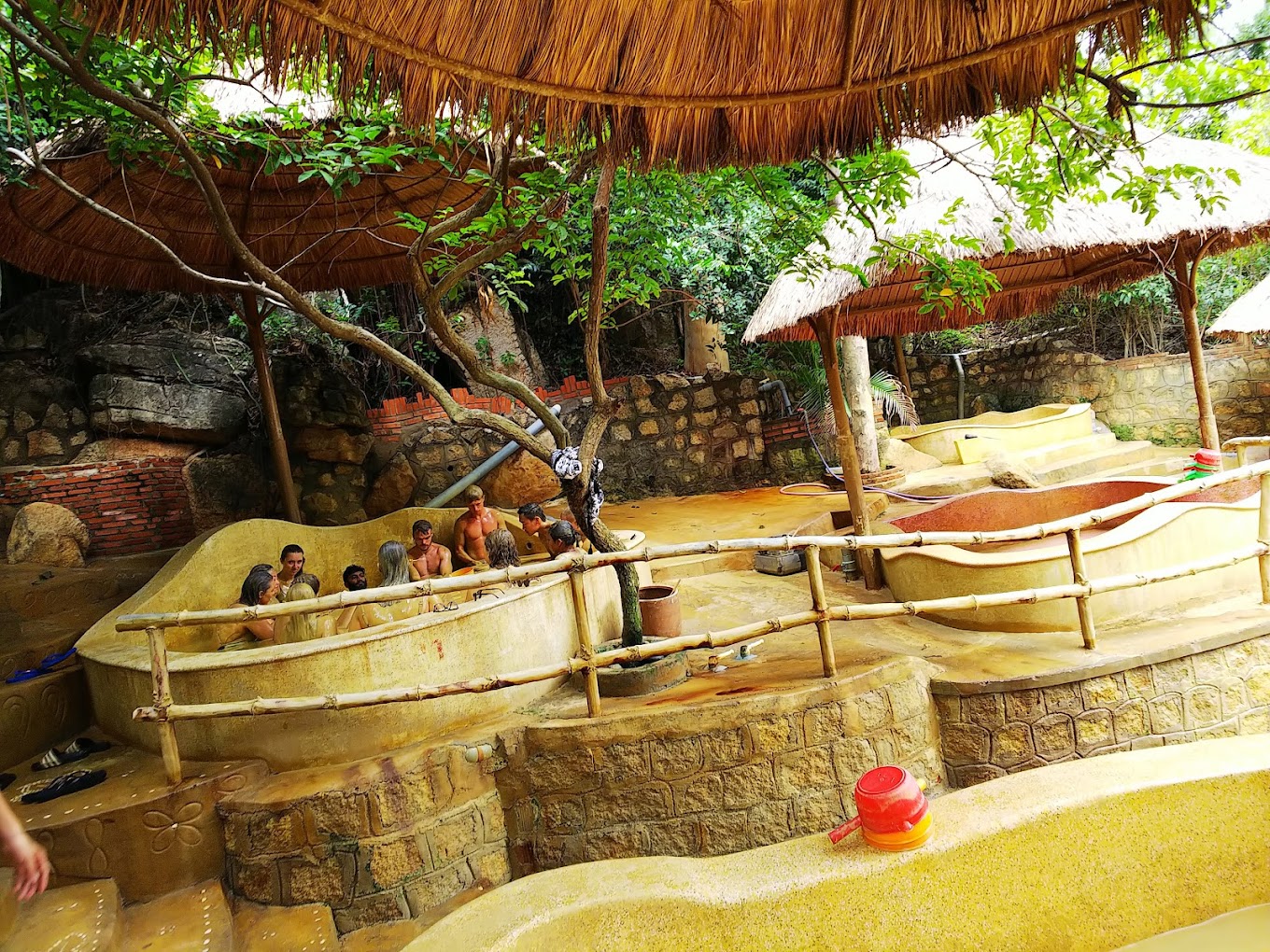Known as the last feudal dynasty of Vietnam, it began with the coronation of Nguyen Phuc Anh in 1802 and lasted until Emperor Bao Dai abdicated in 1945. The Nguyen Dynasty went through a total of 13 emperors spanning 7 generations. It can be said that the Nguyen Dynasty marked many ups and downs in the history of Vietnam, especially during the French invasion in the mid-19th century.
To this day, the tombs of 7 out of the 13 emperors of the Nguyen Dynasty still exist. Each tomb carries its own unique imprint, symbolizing the personality and preferences of each emperor. When visiting these tombs in Hue as a tourist, you will have the opportunity to learn more about the secrets of the imperial courts of the Nguyen Dynasty that have been preserved until now.
Table of Contents
Introduction to Some Aspects of the 13 Reigns of the Nguyen Dynasty
According to recorded history, the Nguyen Dynasty went through 13 reigns, from 1802 to 1945. Similar to other dynasties, the Nguyen Dynasty also experienced development and fluctuations throughout Vietnam’s history.
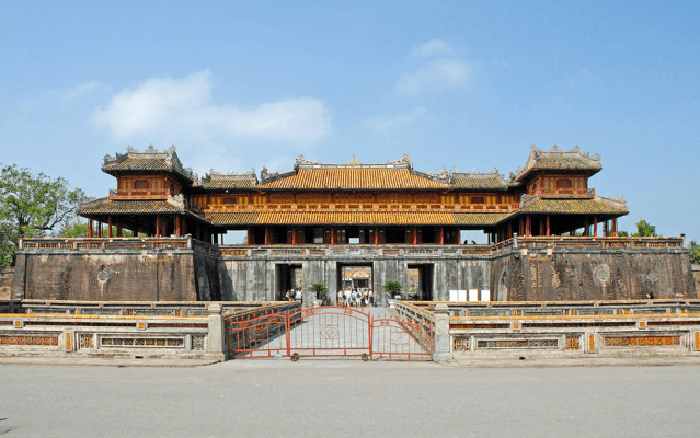
In the Year of Nhâm Tuất in 1802, Nguyen Phuc Anh captured the Tay Son dynasty, ascended to the throne, and proclaimed himself Emperor Gia Long, marking the beginning of a new dynasty, the Nguyen Dynasty. In a period of decline, the emperors from Gia Long to Tu Duc worked to establish and reinforce the feudal system, protecting the traditional rule. In the first half of the 19th century, under Nguyen rule, Vietnamese society seemed to stagnate, leading to a series of peasant uprisings and providing conditions for French colonial invasion.
Regarding politics
After establishing the capital in Phu Xuan, Emperor Gia Long maintained the administrative units in both the northern and southern regions. In 1804, Gia Long changed the name of the country to Vietnam, and in 1838, it was changed again to Dai Nam. Like previous dynasties, the central government was headed by the emperor, who held all executive powers. To consolidate power, the Nguyen emperors did not have a Prime Minister, Chancellor, Crown Prince, or Empress. It was only during the reign of the 13th Nguyen Emperor, Bao Dai, that a queen, Nam Phuong, was officially recognized. Under the emperor, there were also six ministries and five regional governors.
Regarding legal matters
In 1815, under the direction of Emperor Gia Long, Nguyen Van Thanh, the Governor-General of the North, completed the Nguyen Dynasty’s legal code known as Hoang Trieu Luat Le, or the Gia Long Code.
Regarding the military
The military consisted of three main branches: Royal Guards, Forbidden Troops, and Frontier Troops.
Regarding foreign affairs
After defeating the Tay Son dynasty, Emperor Gia Long immediately sent envoys to China to seek recognition. Since then, the country was known as Vietnam, which was later changed to Dai Viet in 1813 and Dai Nam in 1838. During that time, the Nguyen emperors seemed to greatly respect the Qing dynasty in China, and all foreign affairs and diplomatic matters required approval from the Qing court.
Regarding education
During the early years of their reign, Emperor Gia Long reorganized the imperial examination system, holding the first Hương examination in 1807. However, only a few candidates passed. At this time, the Đình and Hội exams did not exist. During the reign of Emperor Minh Mang, in 1822, the Nguyen Dynasty began holding Khoa exams, and in 1826, the Đình exams were introduced. However, the emperors prohibited anyone from passing the Trạng Nguyễn exam to avoid the “Tứ bất” punishment mentioned earlier.
In terms of historical periods, the Nguyen Dynasty can be divided into two main phases. The first phase involved independence and self-rule under Emperors Gia Long, Minh Mang, and part of Tu Duc’s reign. After the death of Emperor Tu Duc, the Nguyen Dynasty fell under the dominance of French colonial rule, leading to the Patenotre Treaty in June 1884. From then on, Vietnam’s independence was eroded, and the Nguyen emperors became figureheads.
Despite falling under French colonial rule, the Nguyen Dynasty still made significant contributions to the development of the nation in areas such as administrative organization, diplomacy, economy, culture, education, science, technology, and more.
On August 30, 1945, Emperor Bao Dai, the last monarch of the Nguyen Dynasty, abdicated the throne and handed over the sword to the Revolutionary government. From this point onwards, the Nguyen Dynasty completely collapsed.
The Nguyen Dynasty consisted of which kings?
Nguyen Phuc Anh (self-styled Gia Long) 1802-1819
Nguyen Phuc Anh, also known as Gia Long, laid the foundation for the Nguyen Dynasty, which lasted for 143 years. During the period when the Nguyen lords were weakened by the attacks of the Tay Son rebels, Nguyen Anh made every effort to regain power for the Nguyen family. Taking advantage of the death of King Quang Trung, or Nguyen Hue, Nguyen Anh launched his forces, and in 1802, he ascended the throne, adopting the title Gia Long.
In 1819, King Gia Long passed away, leaving behind 31 children, including 13 sons and 18 daughters.
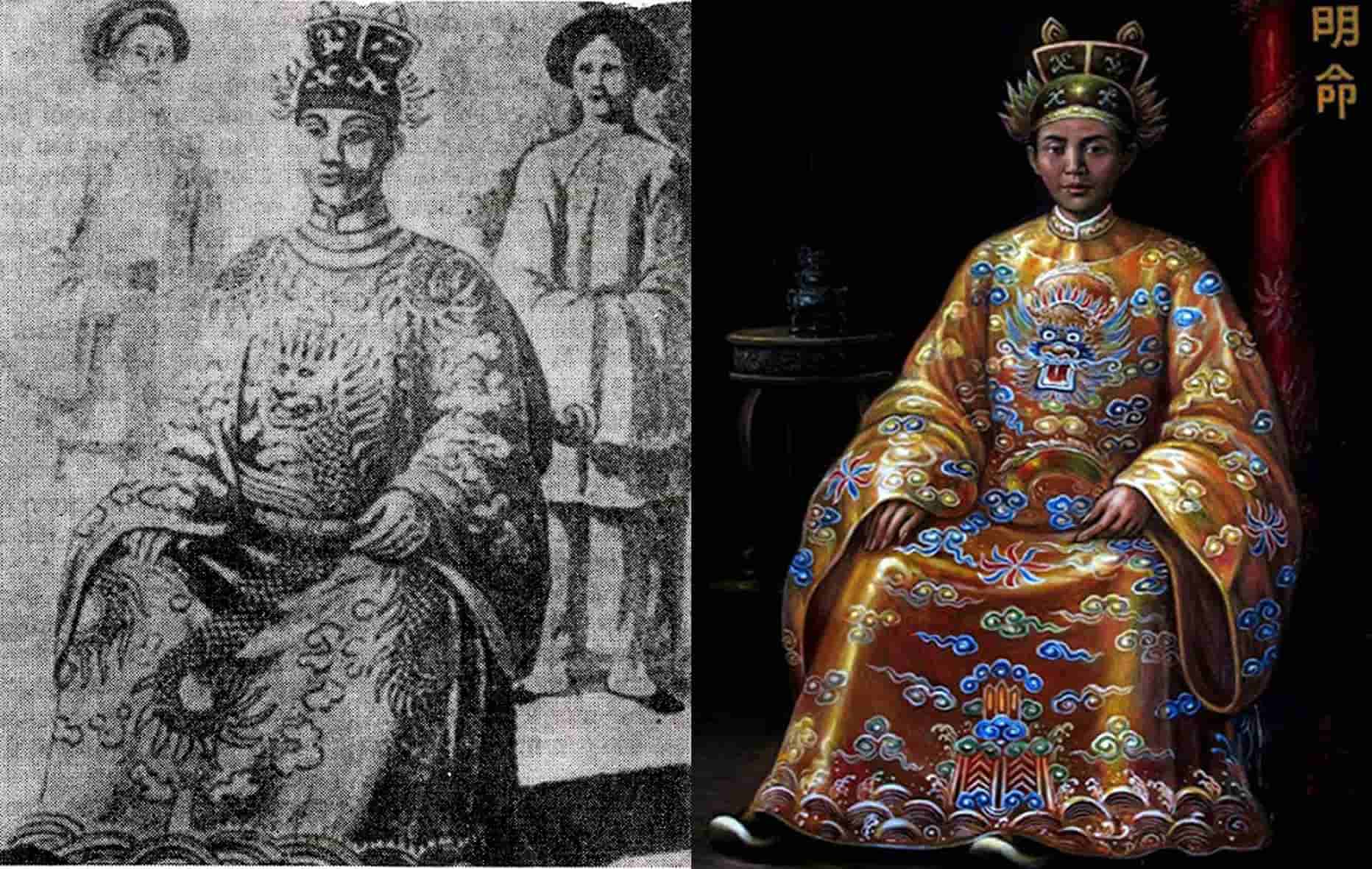
Nguyen Phuc Dam (self-styled Minh Mang) 1820-1840
He was the fourth son of King Gia Long and Queen Thuan Thien Cao. During his reign, King Minh Mang made significant contributions, implementing various reforms such as abolishing feudal fortresses, establishing provinces, reorganizing the hierarchical system and salaries of officials, promoting agricultural development, improving transportation infrastructure, and aiding the poor, elderly, and disabled without support.
He also emphasized Confucian education, encouraging the search for talented individuals, leading to the establishment of the Quoc Tu Giam (the National Academy), and expanding the Dinh and Thi Hoi examinations (under King Gia Long, only the Thi Hoi examination existed). Under King Minh Mang’s rule, Vietnam’s territory expanded, making it a powerful nation, hence the name Dai Nam. King Minh Mang passed away in 1841 at the age of 50, leaving behind 74 sons and 68 daughters.
Nguyen Phuc Mien Tong (self-styled Thieu Tri) 1841-1847
King Thieu Tri was the eldest son of King Minh Mang and Lady Ho Thi Hoa. He ruled for seven years and died at the age of 41, leaving behind 29 sons and 35 daughters.
Nguyen Phuc Hong Nham (self-styled Tu Duc) 1848-1883
King Tu Duc, the second son of King Thieu Tri and Lady Pham Thi Hang, ruled for 36 years, making him the longest-reigning monarch in the Nguyen Dynasty, living to the age of 55. He had no biological children but adopted three sons, all of whom later became kings: King Dục Đức, King Dong Khanh, and King Kien Phuc.
Nguyen Phuc Ung Chan (self-styled Dục Đức) 1883 – 3 days
Upon King Tu Duc’s death, he passed the throne to Nguyen Phuc Ung Chan, self-styled Dục Đức, but this was just a title and not a formal reign. However, just three days after the enthronement ceremony, Dục Đức’s mother and wife had him dethroned and imprisoned. He died in 1884 at the age of 32, leaving behind 11 sons and 8 daughters.
Nguyen Phuc Hong Dat (self-styled Hiep Hoa) 1883 – 4 months
Immediately after Dục Đức’s dethronement, Nguyen Phuc Hong Dat, the 29th son of King Thieu Tri and Lady Doan Tan Truong Thi Thuan, was placed on the throne, self-styled Hiep Hoa. However, due to his pro-French stance, he was dethroned just four months later in 1883. He was forced to take poison and died in November of the same year. He had 11 sons and 6 daughters.
Nguyen Phuc Ung Dang (self-styled Kien Phuc) 1884
After King Hiep Hoa was deposed, Nguyen Phuc Ung Dang, the third son of Prince Kien Thai Nguyen Phuc Hong Cai and Lady Bui Thi Thanh, ascended the throne at the age of 15, adopting the title Kien Phuc. However, his reign lasted only 8 months as he died at the age of 16.
Nguyen Phuc Ung Dang (self-styled Kien Phuc) 1884
After King Hiep Hoa was deposed, Nguyen Phuc Ung Dang, the third son of Prince Kien Thai Nguyen Phuc Hong Cai and Lady Bui Thi Thanh, ascended the throne at the age of 15, adopting the title Kien Phuc. However, his reign lasted only 8 months as he died at the age of 16.
Nguyen Phuc Ung Lich (self-styled Ham Nghi) 1885
King Ham Nghi, the fifth son of Prince Kien Thai Nguyen Phuc Hong Cai and Lady Phan Thi Nhan, was brought to the throne after King Kien Phuc’s death. He became king at the age of 14. In 1885, nationwide anti-French movements erupted. King Ham Nghi, along with his court officials, fled to Tan So. Despite several calls from the French for his return, he resisted. In 1888, a servant was bribed to reveal his location, leading to his capture and extradition to the French. He had 1 son and 2 daughters.
Nguyen Phuc Ung Duong (self-styled Dong Khanh) 1886-1888
After King Ham Nghi abdicated, the Hue court negotiated with the French and placed Ung Duong on the throne, self-styled Dong Khanh. However, he fell ill and died at the age of 25, just 3 years into his reign. He had 6 sons and 4 daughters.
Nguyen Phuc Buu Lan (self-styled Thanh Thai) 1889-1907
Nguyen Phuc Buu Lan was the seventh son of King Dục Đức and Lady Phan Thi Dieu. When King Dong Khanh passed away, the Hue court sought French approval and made Buu Lan the king at the age of 10, self-styled Thanh Thai. Despite his young age, King Thanh Thai had progressive ideas and intended to resist the French. After 19 years of rule, the Nguyen court, under pressure from the French, announced that the king suffered from mental illness and forced him to abdicate. He had 19 sons and 26 daughters.
Nguyen Phuc Vinh San (self-styled Duy Tan) 1907-1916
Nguyen Phuc Vinh San was the fifth son of King Thanh Thai and Lady Nguyen Thi Dinh. In 1907, when King Thanh Thai abdicated, Prince Vinh San was made king by the Hue court, self-styled Duy Tan, at the age of 8. He was the youngest king in the 13 Nguyen dynasties. With the bloodline of King Thanh Thai, he displayed the demeanor of a king and anti-French sentiments. He, along with Tran Cao Van and Thai Phien, planned to resist the French but was exposed and had to flee the capital. He had 3 sons and 2 daughters.
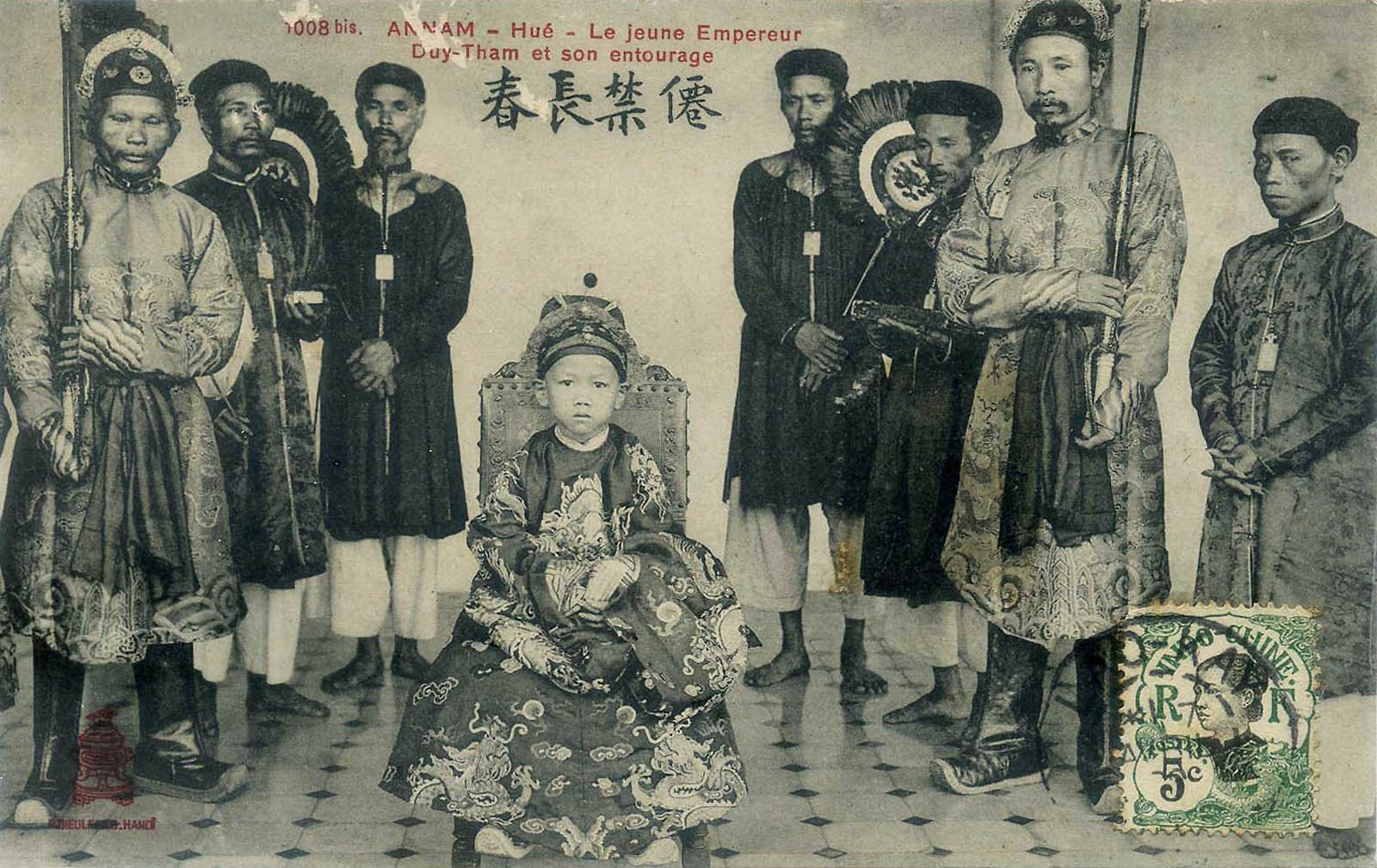
Nguyen Phuc Buu Dao (self-styled Khai Dinh) 1916-1925
Nguyen Phuc Buu Dao was the legitimate son of King Dong Khanh and Lady Duong Thi Thuc. He was only 4 years old when his father passed away and wasn’t initially chosen as king. When King Duy Tan was exiled by the French, Buu Dao was placed on the throne and self-styled Khai Dinh. He ruled for 10 years and died of illness at the age of 41, leaving behind only one child, Prince Vinh Thuy, who later became King Bao Dai.
Nguyen Phuc Vinh Thuy (self-styled Bao Dai) 1926-1945
King Bao Dai was the last king in the 13 Nguyen dynasties. He was sent to France for education at the age of 10. In 1926, following King Khai Dinh’s death, he was brought back to Vietnam, crowned king, and self-styled Bao Dai. After nearly 20 years, he officially abdicated and handed over power to the temporary revolutionary government. He had 2 sons and 3 daughters.
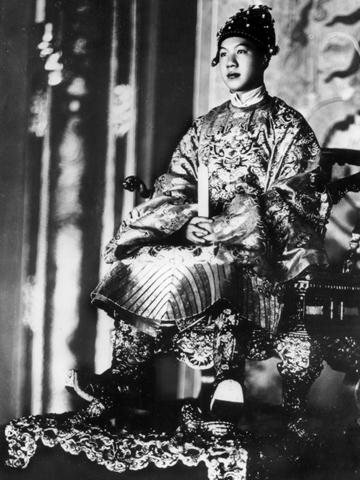
13 Nguyen Dynasty Kings and the Magnificent Tomb Systems
Although the Nguyen Dynasty had a total of 13 kings, for various reasons, only 7 tomb complexes were constructed. All of them have been preserved to this day, with each tomb having its own unique architectural style, containing deep cultural and spiritual values. The common feature of these tombs in Hue is that they were built during the reign of the kings, so everything is not at all melancholic but placed in a serene natural setting, adorned with intricate and beautiful carvings.
Today, the tomb complexes in Hue have been restored and renovated, partly to commemorate the contributions of the kings and partly to serve as tourist attractions. Visitors are required to purchase tickets to enter. Among the 7 tombs, three are considered the most beautiful and grandiose: the Khai Dinh Tomb, the Tu Duc Tomb, and the Minh Mang Tomb.
Khai Dinh Tomb – the Most Exquisite Tomb in Hue
This is the most modern-looking tomb, thanks to its use of construction materials and architectural style from the West. Despite its small size, the Khai Dinh Tomb in Hue is the most labor-intensive and expensive structure in the Nguyen Dynasty tomb system. Its main attraction lies in the architectural elements inside the tomb, which bear significant influences from Indochinese, Buddhist, and Roman Gothic architectural styles.
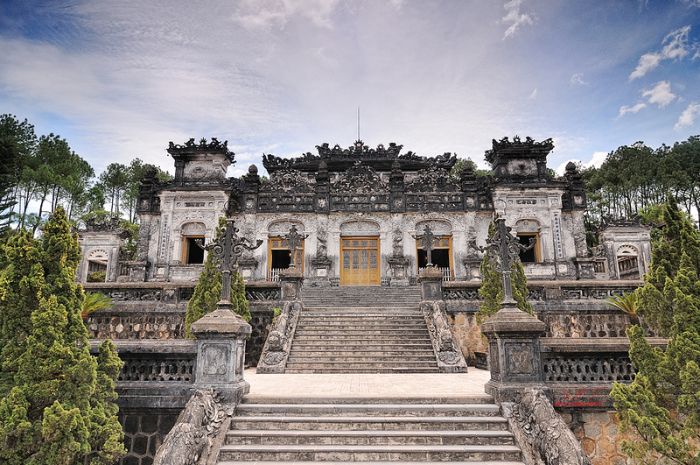
Tu Duc Tomb – Elegance and Romance
Known as the most refined and poetic of the 13 Nguyen Dynasty kings, King Tu Duc desired his final resting place to be filled with music and poetry. Unlike the grandiosity of the Khai Dinh Tomb, the Tu Duc Tomb features a serene and harmonious natural setting, exuding the grace and temperament of the king himself.
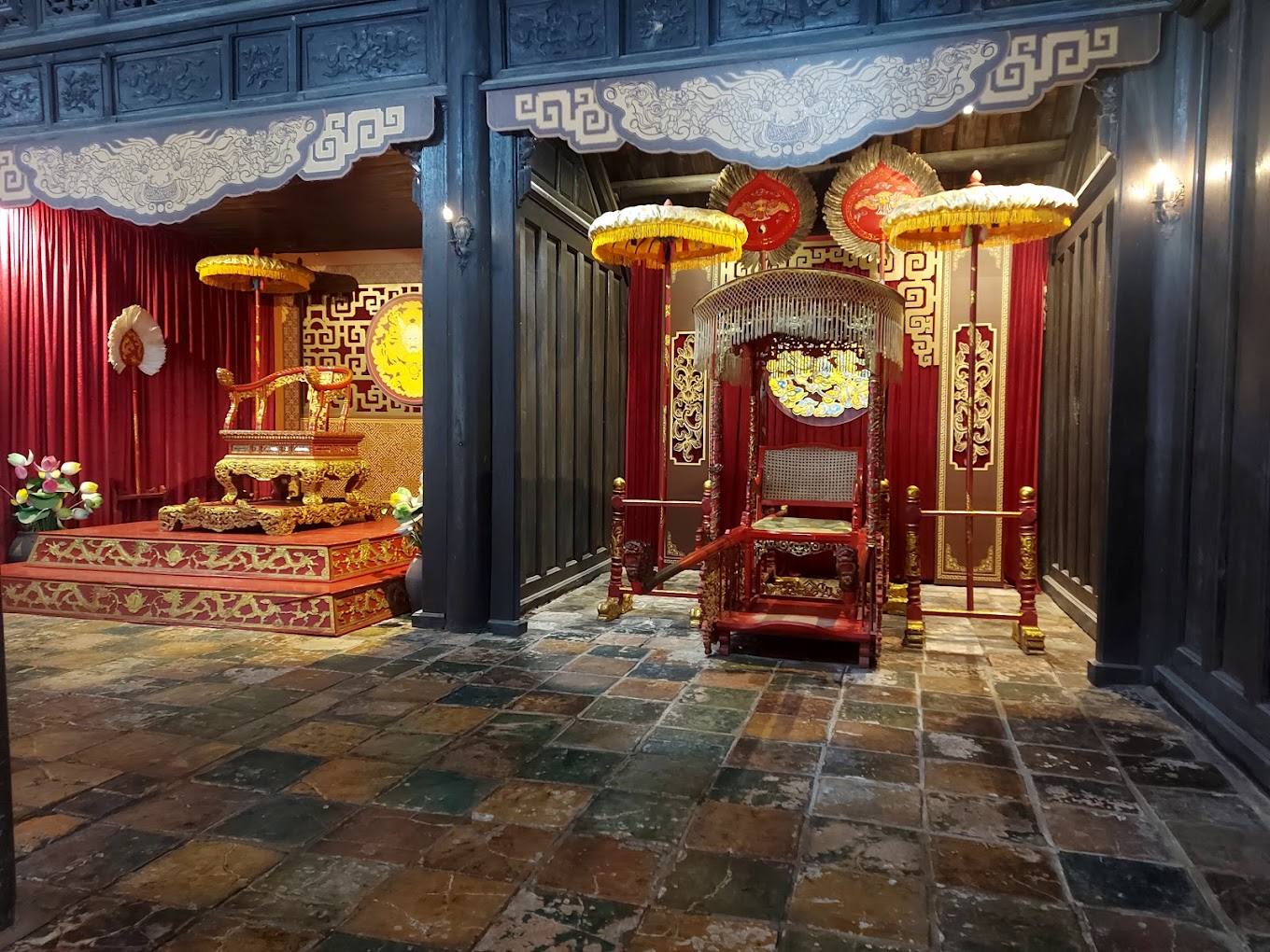
Minh Mang Tomb – Rich in Confucian Tradition
Though not as grand and opulent as Khai Dinh or Tu Duc’s tomb, the Minh Mang Tomb is captivating due to its adherence to traditional tomb architecture. In an overall view, this tomb exudes a sense of solemnity and grandeur.
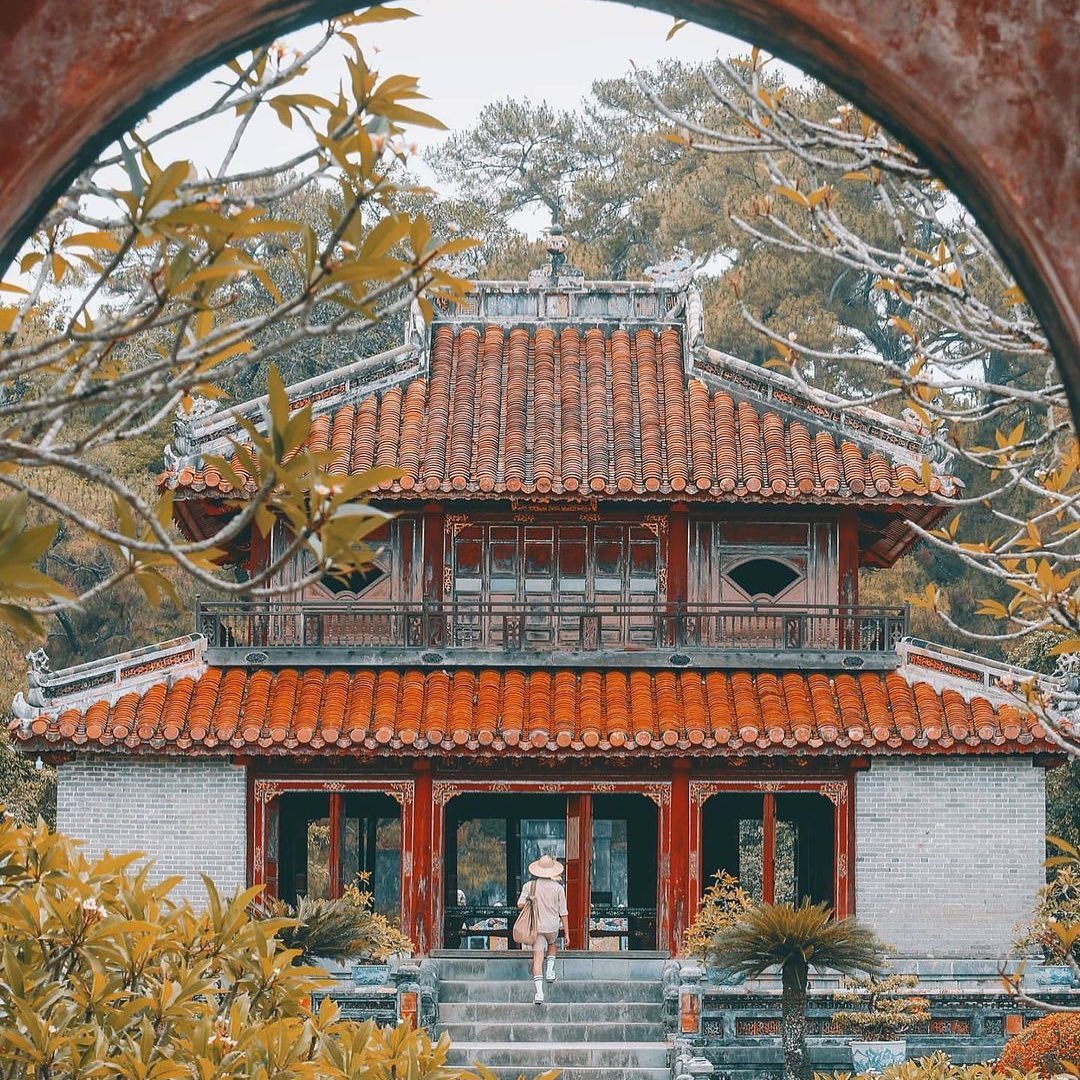
The 13 Nguyen Dynasty reigns went through various ups and downs and historical events but played a major role in the course of Vietnam’s history. When you come to Hue, visit the Imperial City, the tomb complexes, the Hon Chen Palace, the Nam Giao Esplanade, you will, to some extent, gain a deeper understanding and a growing sense of pride in what our ancestors have achieved.


